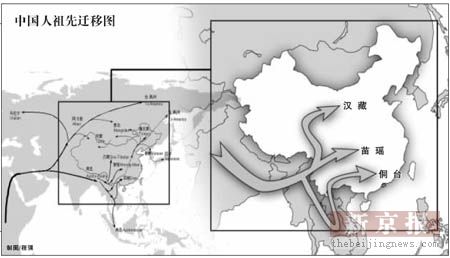Uyghur People & History
(Click on Thumbnails for high resolution Images. NOTE: Some high res. images may be several MB!)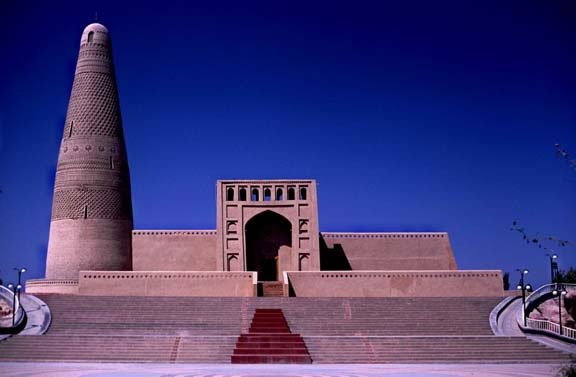
Photo Courtesy: Richard Wertz
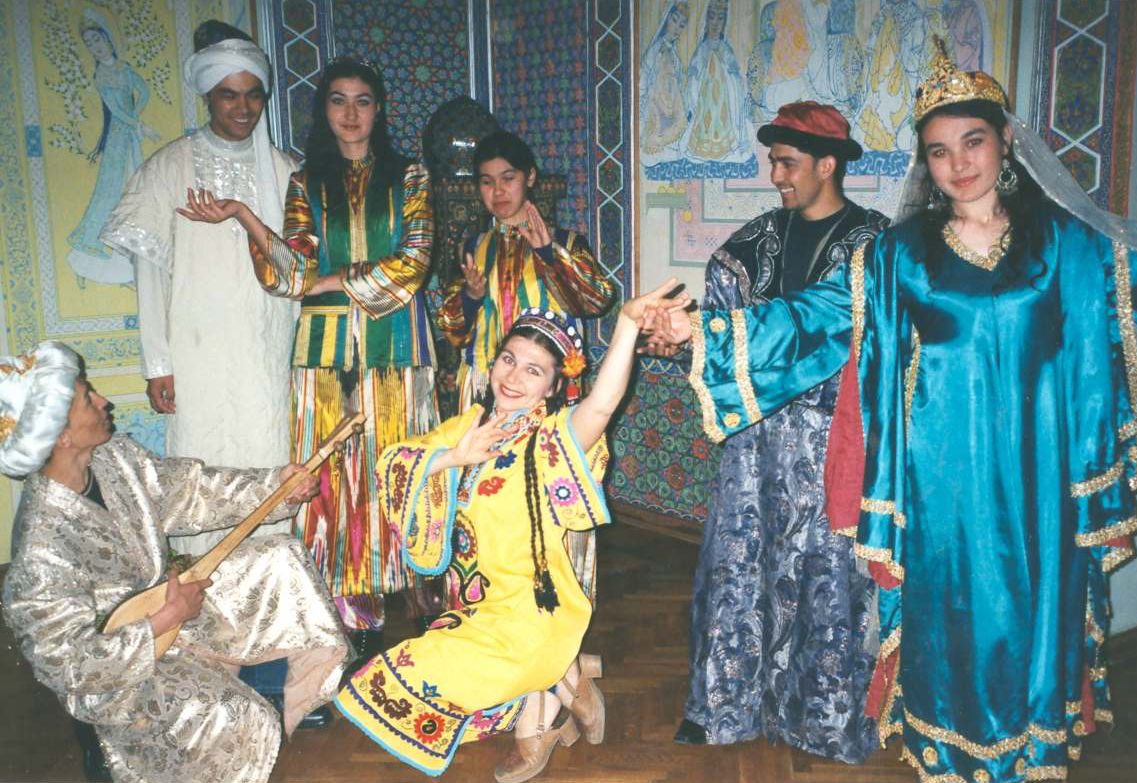
Photo Courtesy: Katja Daniela

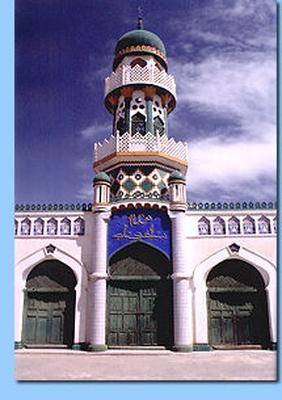
Photo Courtesy: Uyghur World

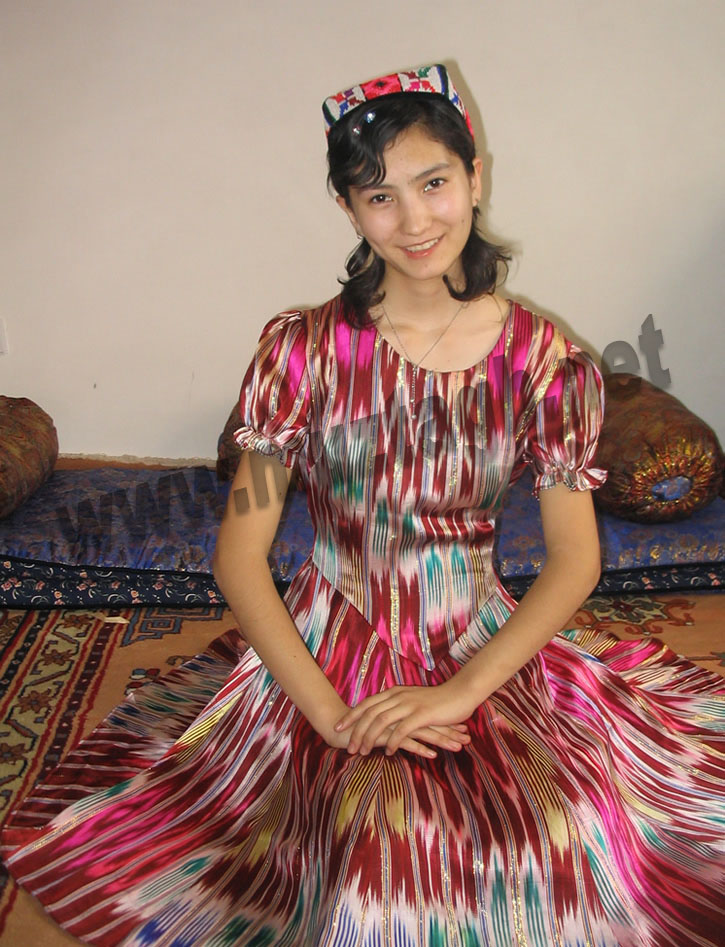
Photos Courtesy: Uyghur World and Bilik Uyghur BBS
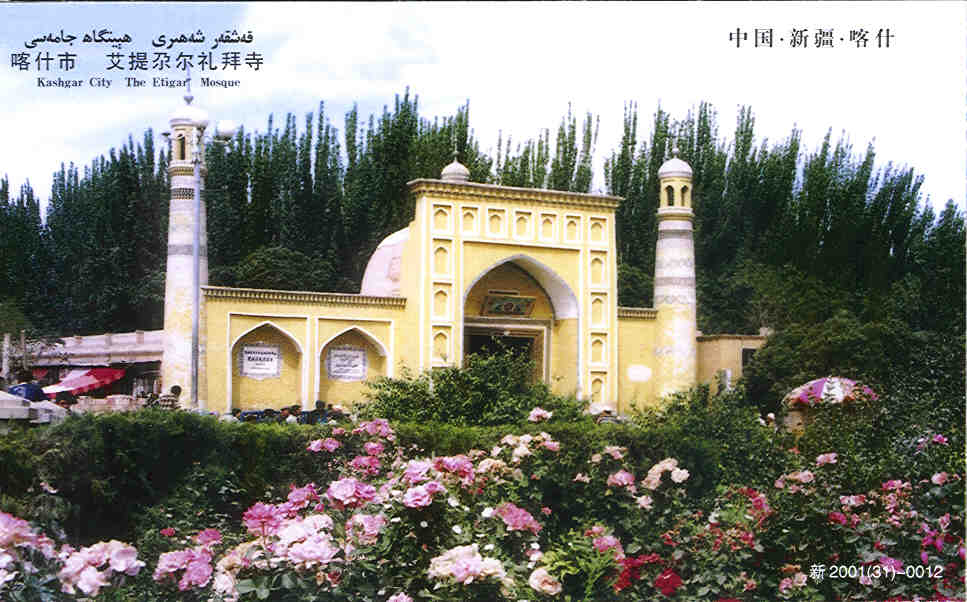
Photo Courtesy:

Photo Courtesy: Uyghur World
Atlas of the Human Journey (National Geographic's Genographic Project Page)
Xinjiang At-A-Glance (UNESCAP)
Pre-History:
It is thought that the early migrants to the Chinese continent took three routes via two entries of Yunnan and Guangxi-Guangdong provinces. In the timeframe of about 10,000 years and developing a genetic mutation to marker M134, this branch of people who went direct north would penetrate the snowy Hengduan Mountains of Tibetan-Qinghai Plateau to arrive at the area next to the Yellow River bends. Owning to cold weather, a big nose, heavy lips and long face developed among this group of people. Splitting out of this northbound migrants would be those who went to the east with a new genetic marker M117, i.e., ancestors of modern Han Chinese. According to Chinese scholar Luo Xianglin's early Sino-Tibetan peoples originated from Mt Minshan and upperstream River Min-jiang areas of Sichuan-Gansu provincial borderline and then split into two groups, with one going north to reach Wei-shui River and upperstream Han-shui River of Shenxi Province and then east to Shanxi Province by crossing the Yellow River. The second branch of early Mongoloids, about 10,000 years ago, entered China's southeastern coastline with genetic marker M119. The ancient Wu people, with M7 genetic marker, are thought to have come to the lower Yangtze area about 3000 years ago. It is possible that a final Mongoloid branch of people who, at about 20,000 years, continued to travel non-stop along the Chinese coastline to reach the Liao-he River area of Manchuria where they developed into Altaic-speaking peoples, i.e., ancestors of Huns, Turks and Mongols.
[ The above summary and figure are based on an independent "Think Tank" web page: Political, Social, Cultural, and Historical Analysis of China. ]
Ancient History (5th century B.C. to 7th century A.D.):In ancient history, many tribes and ethnic groups lived in Xinjiang. The ethnic origins of the residents of Xinjiang began to be clearly recorded in the Han Dynasty (206 B.C.-220 A.D.), the main ones being the Sai (Sak), Rouzhi (or Yueh-chih), Wusun (Usun), Qiang, Xiongnu (Hun) and Han. The Sai were a nomadic tribe that used to roam about the area from the Ili and Chuhe river basins in the east to the Sir (Syrdarya) River valley in the west. Under pressure from the Rouzhi, they moved westward - some to the north bank of the Sir River, while others southward to scatter in the areas of the Pamirs. The Rouzhi roamed the vast region between the Gansu Corridor and the Tarim Basin during the Warring States Period (475 B.C.-221 B.C.) and flourished during the Qin (221B.C.-206 B.C.) and Han dynasties. Attacked by the Xiongnu around 176 B.C., they were forced to move to the Ili River basin, from which they dislodged the Sai. The Wusun first lived in the Gansu Corridor. In the late Qin and early Han period, attacked by the Rouzhi they yielded their allegiance to the Xiongnu. Supported by the Xiongnu, the Wusun attacked the Rouzhi, and drove them out of the Ili River basin. The Qiang originally lived along the middle and upper reaches of the Yellow River. During the Spring and Autumn (770 B.C.-476 B.C.) and Warring States periods, some of the Qiang migrated westward across the Gansu Corridor and the Qilian-Kunlun mountain ranges, leaving their footprints in Xinjiang. The Xiongnu entered Xinjiang mainly around 176 B.C. The Han was one of the earliest peoples to settle in Xinjiang. In 101 B.C., the Han Empire began to station garrison troops to open up wasteland for cultivation of farm crops in Luntai (Bügür), Quli and some other places. Later, it sent troops to all other parts of Xinjiang for the same purpose. All the garrison reclamation points became the early settlements of the Han people after they entered Xinjiang. Since the Western Regions Frontier Command was established in 60 B.C., the inflow of the Han people to Xinjiang, including officials, soldiers and merchants, had never stopped.
The period of the Wei, Jin and Southern and Northern Dynasties (220 A.D.-589 A.D.) was a period of the large-scale merging of ethnic groups in China, witnessing frequent ethnic migration, and the entry into Xinjiang by many ancient ethnic groups, such as the Rouran (Jorjan), Gaoche, Yeda and Tuyuhun. The Rouran were descendants of the Donghu, an ancient people rising on the northern grasslands in the early fifth century. After establishing a powerful regime on the Mongolian grasslands in 402 A.D., they struggled with the Northern Wei (386-534 A.D.) for domination of the Western Regions. The nomadic Gaoche, also called the Tolos or Teli, first appeared around Lake Baikal and the basins of the Orkhon and Tura rivers. In 487, Avochilo, chief of the Puwurgur tribe of the Gaoche, and his brother Qunqi led more than 100,000 families to migrate westward, and founded the state of Gaoche to the northwest of Anterior Cheshi (the ancient city of Jiaohe near modern Turpan). The Yeda, rising in the region north of the Great Wall, moved eastward to the Tarim Basin, attacked the Rouzhi in the south and set up a state in the late fifth century. They crossed the Pamirs, and once controlled part of southern Xinjiang. The Tuyuhun, originating from the ancient Xianbei people, moved westward from Liaodong (the region east of the Liaohe River in northeast China) in the early fourth century, and set up their own regime after conquering the ancient Di and Qiang peoples in the region of southern Gansu, Sichuan and Qinghai.
In the Sui (581-618 A.D.) and Tang (618-907 A.D.) dynasties, the ancient Turk and Tubo peoples exerted important influences on the course of Xinjiang's history. The Turks were ancient nomads active on the northwestern and northern grasslands of China from the sixth to the eighth centuries. Tümaen, a Turki leader, defeated the Rouran in 552, and set up a state centered in Mobei (the area north of the vast deserts on the Mongolian Plateau). The Turki realm later split into the eastern and western sides which fought ceaselessly in their scramble for the Khanate. In the middle of the eighth century, both the Eastern and Western Turki Khanates disappeared, their descendants being assimilated by other ethnic groups. The Tubo were the ancestors of the Tibetans, rising to notice on the Qinghai-Tibet Plateau in the late sixth century. After occupying Qinghai, they began to vie with the Tang Dynasty for control of the Western Regions. In 755, An Lushan and Shi Siming raised a rebellion in the Central Plains, and Tang troops stationed in the Western Regions were withdrawn to battle the rebels, whereupon the Tubo took the opportunity to occupy southern Xinjiang and part of northern Xinjiang.
Medival History (8th century A.D. to 15th century A.D.):In 840, large numbers of Uighurs (an ancient name for modern Uygurs) entered Xinjiang. The Uighur, originally called Ouigour, sprang from the ancient tribe Teli. They were first active in the Selenga and Orkhon river basins, and later moved to the north of the Tura River. In 744, the Uighur founded a khanate in Mobei, and later dispatched troops twice to help the Tang central authorities to quell the An Lushan-Shi Siming Rebellion. The Uighur Khanate collapsed in 840 because of natural disasters, internal strife and attacks by the ancient Jiegasi tribe. Consequently, most of the Uighur migrated westward. One of their sub-groups moved to the modern Jimsar and Turpan regions, where they founded the Gaochang Uighur Kingdom. Another sub-group moved to the Central Asian grasslands, scattered in areas from Central Asia to Kashi, and joined the Karluk and Yagma peoples in founding the Karahan Kingdom. After that, the Tarim Basin and its surrounding areas were under the rule of the Gaochang Uighur Kingdom and the Karahan Kingdom. The local residents were merged with the Uighurs that had moved west, thus laying the foundation for the subsequent formation of the Uygur ethnic group. In 1124, Yollig Taxin, a member of the ruling house of the Liao Dynasty (916-1125 A.D.), led his people, the Khitan tribe, westward and conquered Xinjiang, where he established the kingdom of Western Liao. In the early 13th century, Genghis Khan led an expeditionary army to Xinjiang, where he granted the territories he had conquered to his children and grandchildren. The Uighurs further assimilated a portion of the Khitans and Mongolians.
Recent History (16th century A.D. to Present):Oyrat was the general name used for the Mongolians in Moxi (the area west of the vast deserts on the Mongolian Plateau) in the Ming Dynasty (1368-1644). The Oyrat first lived in scattered areas along the upper reaches of the Yenisaey River, gradually spreading to the middle reaches of the Ertix and Ili river basins. The early 17th century saw the rise among them of the Junggar, Dorbüt, Huxut and Turgut tribes. In the 1670s, the Junggar occupied the Ili River basin, becoming leader of the four tribes, and put southern Xinjiang under their control. From the 1760s on, the government of the Qing Dynasty (1644-1911) sent Manchu, Xibe and Suolun (Daur) troops from northeast China to Xinjiang in order to strengthen the frontier defense of the region, and they added to the ethnic mix in Xinjiang. Afterwards, Russians and Tatars migrated into Xinjiang. By the end of the 19th century, Xinjiang had 13 ethnic groups, namely, Uygur, Han, Kazak, Mongolian, Hui, Kirgiz, Manchu, Xibe, Tajik, Daur, Ozbek, Tatar and Russian. The Uygurs formed the majority, as they do today.
The above is a summary from the white paper on the history and development of China's Xinjiang Uygur Autonomous Region, issued by the Information Office of the State Council of People's Republic of China (May 2003, cf. Chinese Embassy, Washington D.C. website).
References:
Turks & UyghursXinjiang White Paper
The Uyghurs - Wikipedia, the free encyclopedia
The Uyghurs - Independent Tripod Site
Uyghur World
Exploring Chinese History - Richard Wertz
Please e-mail Ravi Kanda if you have any suggestions, comments or corrections.
